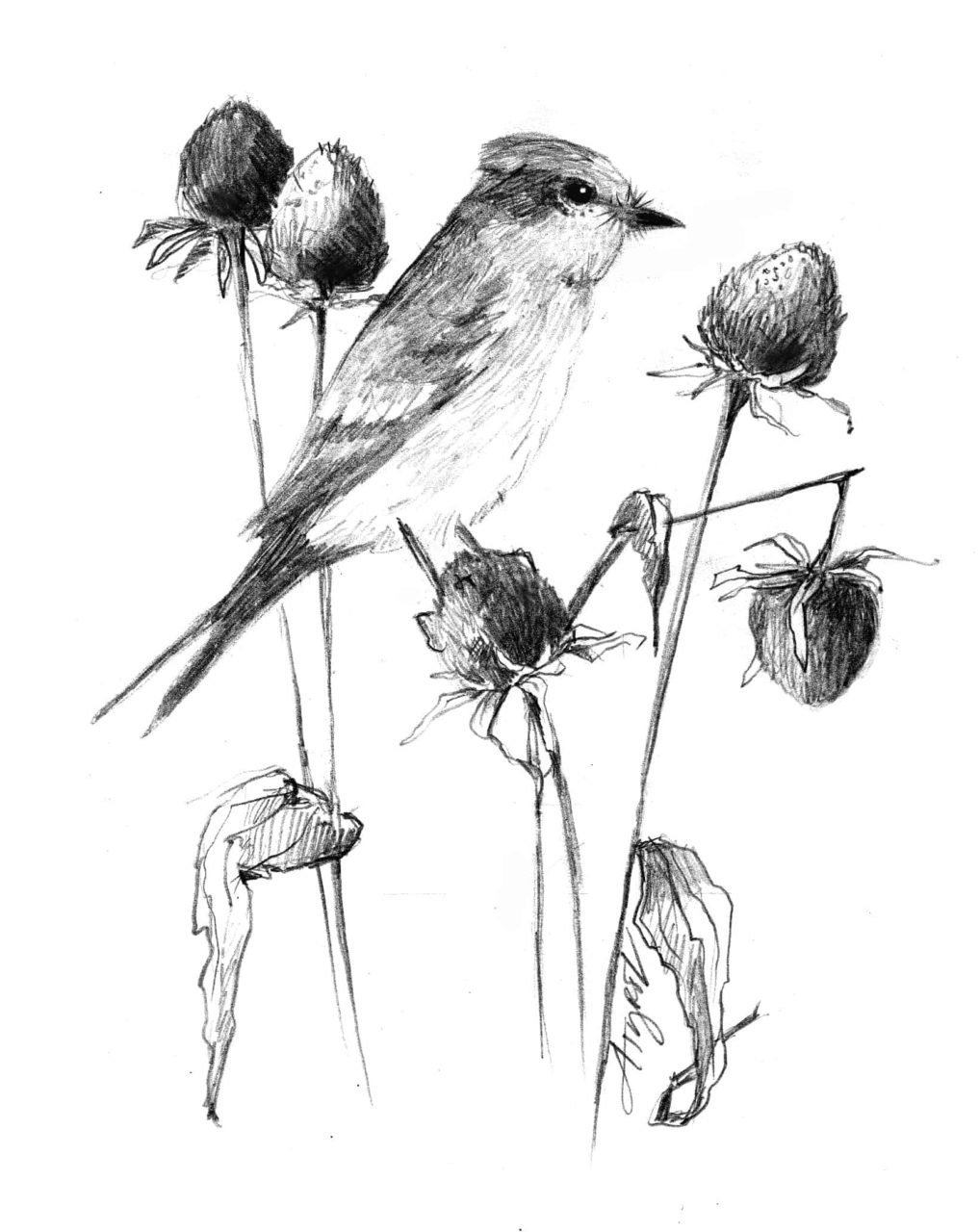By Carolyn Lorié
On the north end of my home is a nest site favored by eastern phoebes. Every year a pair shows up, sets up house, and raises a family. They arrive early in the spring, and I spend the long days of spring and summer watching them. At some point, the nest empties out, and then I know that summer will soon end and the phoebes will be on their way.
But exactly when they will be on their way is hard to predict. Fall’s migration tends to be a more open-ended process compared to spring’s, when the urgency to reproduce drives birds to arrive in the Northeast during a relatively short window of time. There is an almost explosive quality to the arrival of songbirds in March and April. One day we wake to the usual quiet of winter, and then the next there is a riot of trilling, chirping, calling, and singing.
As summer winds down, however, the volume diminishes slowly. In August, I still wake to bird songs, but there are fewer voices; the chorus isn’t as frenetic and rich.
While the urge to reproduce is the primary driver of spring migration, there are many factors that dictate when songbirds migrate south. One of them is diet. Many species of flycatchers and warblers are insectivores – they generally leave first, because the bug population dwindles as summer ends. Sparrows and other omnivores that eat fruits and seeds as well as bugs have more dietary choices, so they have the option to stick around well into the fall. Phoebes belong to a third category of birds that switch from being insectivores during the breeding season to being omnivores later in the year; other species that transition are the hermit thrush, the yellow-rumped warbler, and the red-eyed vireo.
Eating only insects during the breeding season makes sense, because they are plentiful and the rich protein is just what growing baby birds need. All spring and summer I watch the phoebes swoop, dart, and dip as they snatch bugs out of the air and bring them to the nest. Fruits and seeds, on the other hand, tend to be scarce when nestlings first hatch but abundant as fall begins and the birds prepare to migrate.
But what’s to be gained by sticking around and changing your diet? Why not head south immediately, given that the season’s main objective – reproduction – has been accomplished?
Because waiting has its advantages, explained Frank La Sorte, a researcher at the Cornell Lab of Ornithology. “There is evidence that changes in diet for these species are associated with changes in how fat is stored and transported to the muscles and how protein is used and replenished,” La Sorte said.
Flying hundreds or thousands of miles is an enormous task for an animal that weighs about six ounces; sticking around into the fall and feasting on seeds and fruit allows them to store more fat and energy, which makes it more likely that they will survive the journey.
Having a broader migration window has other benefits, too. “Migration conditions could potentially be more favorable early in the fall, but if a migrant must depart early, the range of options is likely to be more limited,” La Sorte said. In other words, if phoebes had to leave as soon as the bug population dwindled, they might not have the option of waiting for the dry, windless conditions that many migrating birds prefer. But because of their adaptable digestive systems, they can wait.
As we slip into October, the mornings have grown cool and quiet. The days no longer feel endless, and the air no longer hums with insects. But the phoebes remain. I don’t know when they will leave, only that one day the bugs and seeds and fruit will grow scarce, and they will be on their way.
Carolyn Lorié lives with her two rescue dogs and very large cat in Thetford, Vt. The illustration for this column was drawn by Adelaide Tyrol. The Outside Story is assigned and edited by Northern Woodlands magazine: northernwoodlands.org, and sponsored by the Wellborn Ecology Fund of New Hampshire Charitable Foundation: [email protected]
How do birds know when to migrate?




